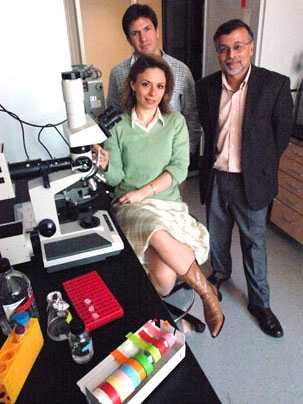Researchers at MIT's Picower Institute for Learning and Memory have identified an insulin-like growth factor that prevents the usual effects of visual deprivation in the brain.
This key molecule may one day provide a way to manipulate connections among neurons in the developing brain, and possibly even in the adult brain. Researchers may use it to repair brain cell connections lost or damaged through injury or diseases such as Alzheimer's, or to treat such conditions as autism.
The work was reported April 22 in the advance online edition of Nature Neuroscience.
A team of scientists led by Mriganka Sur, the Sherman Fairchild Professor of Neuroscience and head of the Department of Brain and Cognitive Sciences at MIT, found that insulin-derived growth factor 1 (IGF1) prevents the physiological effects that occur when visual input is shut down to one eye.
In a well-known experiment conducted in the 1960s, Harvard researchers David Hubel and Torsten Weisel, who later won the Nobel Prize, found that depriving neurons of stimulation from one eye led to those neurons being reassigned to the non-deprived eye.
With the addition of IGF1, "there is no loss of deprived eye connections or gain of non-deprived eye connections," Sur said. "We hope that this growth factor will turn out to be equally important for other kinds of developmental and even adult plasticity," he said, referring to the brain's ability to change in response to stimuli.
Sur's co-authors are postdoctoral fellows Daniela Tropea and Gabriel Kreiman; research affiliates Alvin Lyckman and Sayan Mukherjee; postdoctoral associate Hongbo Yu; and graduate student Sam Horng.
This work is supported by the National Institutes of Health and the Simons Foundation.






